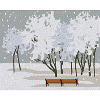Landscape Architecture Program

Landscape Architecture Program: Faculty Scholarly and Creative Activity
Document Type
Article
Date of this Version
2020
Citation
Karle and Carman Built Heritage (2020) 4:5
doi: 10.1186/s43238-020-00006-6
Abstract
Due to the size and scope of rural landscapes, large-scale documentation methods are critical to advancing landscape conservation and preservation initiatives. Using an in-progress online project to document a 1935 US federally sponsored program, the Prairie States Forestry Project (PSFP), the authors show how diverse visual and textual data can be spatialised to construct a map reading of landscape change over time. To date, the PSFP is one of the largest afforestation projects in the history of the United States; the United States Forest Service and thousands of landowners undertook a series of cooperative planting agreements to plant over 200 million trees over seven years in approximately 33,000 shelterbelts from the panhandle of Texas to the North Dakota border. Due to a lack of coordinated monitoring, shelterbelt location and status was unknown, and the original archival material remained unpreserved. In the case of the Prairie States Forestry Project, the process for digitising and disseminating previously inaccessible primary source documents is an act of preservation that creates opportunities for future large-scale landscape conservation projects. The application of the archival mapping method and resulting PSFP datasets can be incorporated by individuals working on heritage documentation such as Historic American Landscapes Survey (HALS) reports, National Register nominations, or Cultural Landscape Reports for the National Parks Service. The dataset could also be used by private groups such as cooperative conservation land managers.


Comments
Open access. Licence: CC BY